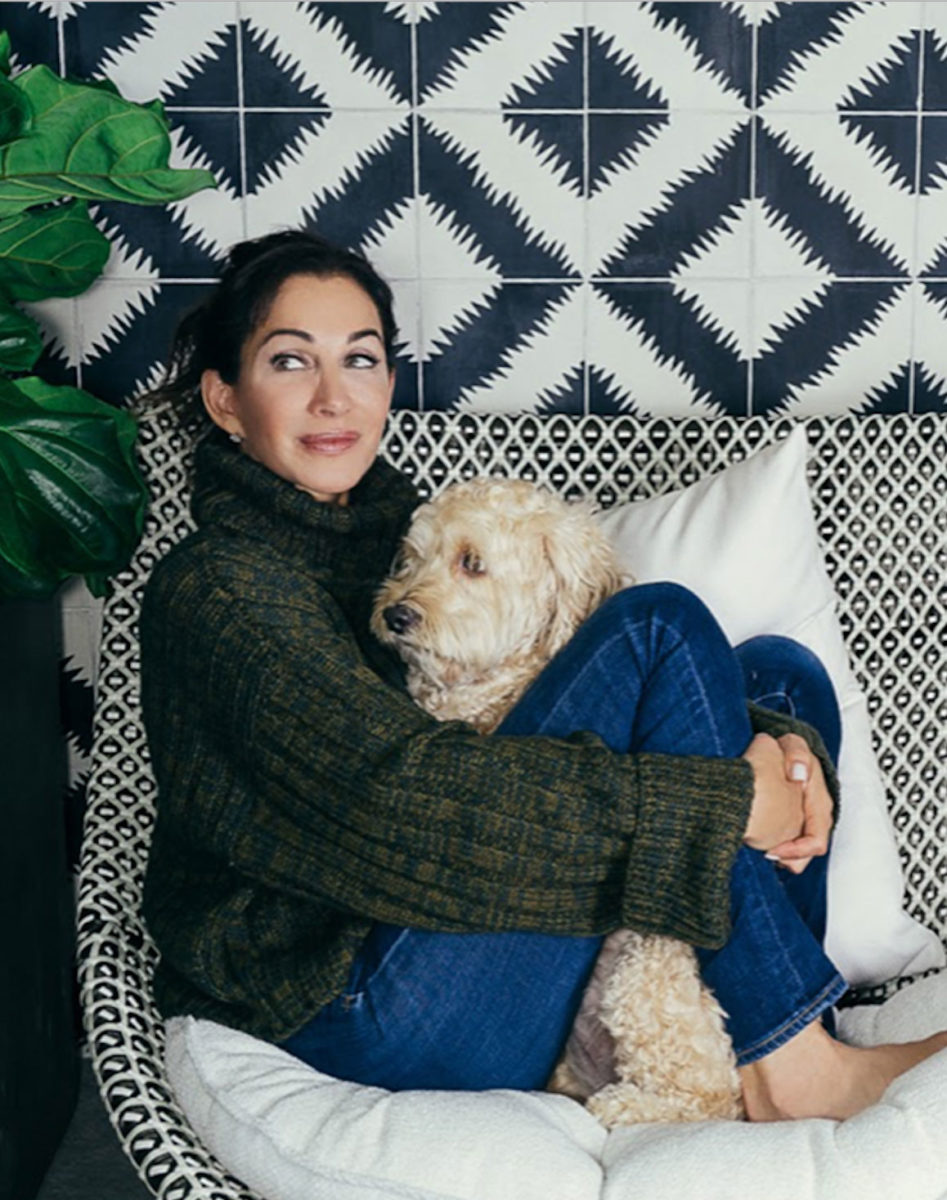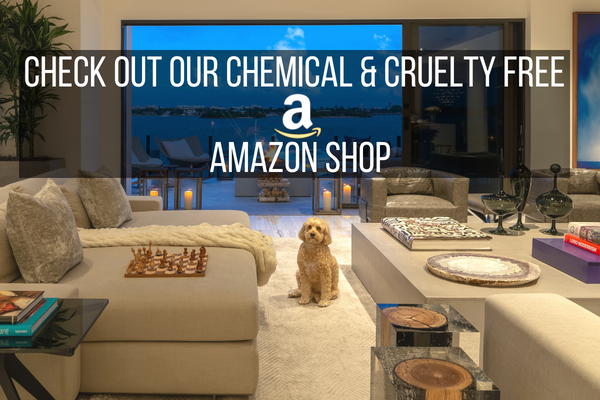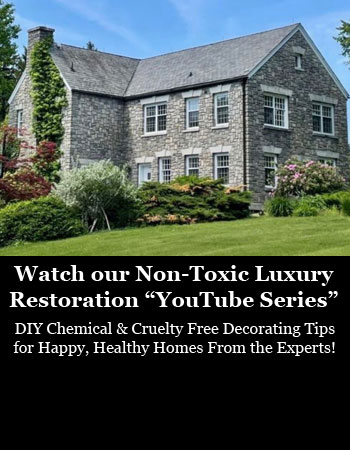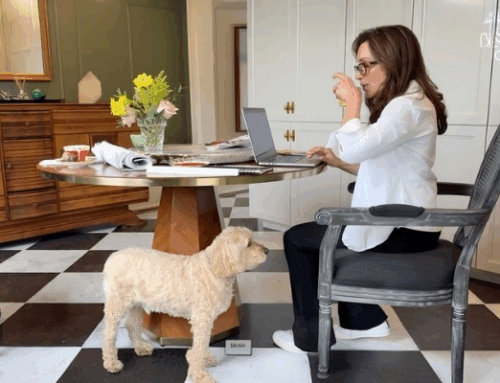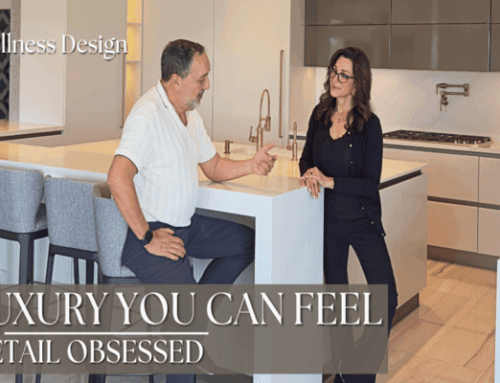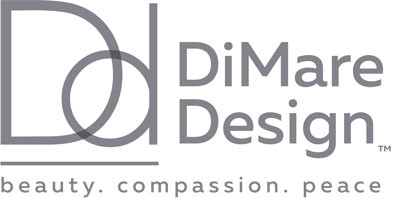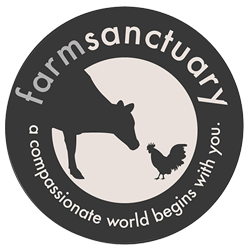Listen to this audio recording from a podcast Deborah did on safe & non-toxic nursery design with Dr. Jay Warren.
DR. JAY WARREN: Welcome back to another episode of Healthy Births, Happy Babies. I’m Dr. Jay Warren. I’m the prenatal and pediatric chiropractor here at the Cap Wellness Center. This podcast is all about helping you have a proactively healthy pregnancy, so you can have a safe, gentle, natural birth. And that’s going to allow you to bring your baby into the world that much more gently and healthily, so you can start off your family experience more powerfully than if it’s full of stress and trauma and other health concerns.
If you are a fan of this show and you haven’t yet subscribed, please do so, wherever you listen to your podcasts, go ahead and subscribe so you don’t miss an upcoming episode. And also if you haven’t rated and reviewed the podcast and you’ve enjoyed it and gotten value of it, that will really help me out, because that’ll allow this podcast to reach more and more parents like yourself that might be missing out on this type of information and helping them along their parenting journey.
So thank you in advance for that, and thank you if you already have rated and reviewed. On today’s episode, we are going to be talking about non-toxic nursery design. Designing the nursery, figuring out all the colors and the themes, and what you’re going to put into it is a really fun part of becoming a parent, whether it’s for your first child, especially there’s so much information around it and a lot of choices to make around it and today’s episode is going to help.
But even if it’s second, third, fourth, baby that’s coming around, you’re redoing the baby’s room, or you have toddlers and you’re looking to change the room up. Our guest today, Deborah Dimare, is going to be sharing some really great advice on what to look for and how to go about that process. So it’s not only a beautiful environment and a nurturing environment, but it’s also really safe in a chemical sense, as well as in an emotional sense. She is an interior designer, she has a special focus on wellness and cruelty-free interior design.
And within that, she even has a special focus around non-toxic nursery design. She is here to talk about all kinds of things about how to choose a crib mattress, how to choose furniture and what to look for from rugs and lighting and scents, and all kinds of things that are really, really important to make a special effort to make sure that not only is it beautiful and goes along with the environment that you want to create for baby and yourself that you’ll be spending time in, but also that it is really safe and healthy, which is something I’m sure all parents want to have.
They just don’t necessarily know to look for these things, because I know I learned a ton in this interview about things to look for that I didn’t know the first time around. Sorry, Nico. Next time. After a quick message, I’ll return and share my conversation with Deborah.
Hello, Deborah. Welcome to the podcast. Thanks for joining me.
DEBORAH DIMARE: Thank you so much for having me.
DR. JAY WARREN: Deborah, you’re a wellness and cruelty-free interior designer, which I want to find out more about, but you have a special focus on non-toxic nursery design. And that’s why I think it’s a really great topic to let our listeners, one, through me pick your brain about what to do, what not to do, those kinds of things. But before we get into nursery design, tell me how you got involved in interior design and then specifically into this wellness, cruelty-free, as well as for baby’s non-toxic?
DEBORAH DIMARE: Sure. Well, how I got into interior design I think it was such a strange thing that happened. If anyone had told me 20 years ago that I would be helping people design their homes, I would have laughed because I never thought of myself as a patient person. I’m from New York originally and we’re really not known for being patient, right? But I have several children. I was a full-time mom until my twins went to kindergarten. And then I was like, “Okay, I’m ready to start working.” To do something with my time.
I was looking for something part-time, and I was looking into all these small businesses and a friend of mine asked me to help her decorate her home. I helped her decorate her home. And then I got a call from her neighbor saying, “I hear you’re a designer.” I said, “I’m not a designer. I just helped my friend decorate her home.” And she said, “Well, could you come meet me at a fabric store?” And I said “Sure.” And I went to a fabric store with her and I spent a couple hours.
And at the end, she gives me a check. I looked at that check like it was $10 million. I was just staring out, I remember. I think it was like for 200 and something dollars. It felt so good to be working and doing something and feeling good and having purpose. I always say we all have to have purpose, and purpose can be in a zillion ways, it doesn’t have to be with a check, but it just felt so good, I guess, after being home with my kids for so many years. And then her cousin called, her sister called, her aunt called.
And before I knew it, I had all these people calling me to help them decorate their homes. I was always very upfront saying, “I’m not a licensed designer.” “Okay. Come over anyway.” Everything just kept moving. And before I knew it, I was on TLC as the decorator on a show. And then I started getting much larger projects and things. That’s really how my business started.
I think one of the reasons that I’ve been lucky with my business is because maybe the lack of formal training has assisted me because I always approach to this day any project as a mother first and foremost. Because as a mother, I want it to be really easy, really durable and functional. I have to think out of the box, because I don’t have the traditional schooling that a lot of designers have because I’m not a designer.
I think that that has benefited me in a way. Because when I decorated my own home as a young mother, we were on a serious budget. And I remember that I got two headboards from a consignment shop for $15 each and I painted them. From Michael’s, I went and I got all these tattoos and things. I put it all over, and I rubbed it. I made it look very vintagey and old. And everyone who came to the house wanted to know where I got those headboards.
I would laugh at that, because they probably cost me 20 bucks each. That’s my mindset and that’s always been my mindset to this day, even doing these luxurious projects. I’m always looking at the budget. How I became a cruelty-free wellness designer just happened as well, because my family and I really love animals very, very much. I mean, as I’m talking to you, right before we started, I said, “Hold on, I have to get the dog a toy or else he’s going to be moaning and groaning all hour because I’m not rubbing him.”
We just love animals. I’m very involved with PETA. I’m on the board of Farm Sanctuary. They’re really playing an integral role in our lives. A couple of years ago, I would say you have to be ready for change, right? You have to be ready. Because once you see things, you then have a decision to make. I saw a video about dog leather, and I didn’t even know dog leather existed. But then again, I say to myself, “Well, what’s the difference between a dog and a cow? They’re two living beings. They’re beautiful animals.”
And since China is the leading exporter of leather, anything with a skin is considered leather. In their culture, they eat dogs and they eat cats. They use dogs for their skins and they are killed, as all animals are in the industry. There’s not one animal that’s not horrifically treated, from a duck for its feathers to a cow, to a dog, to a snake, to an alligator, to a sheep. They’re treated horrifically.
It’s unimaginable what they do to these poor animals before they slaughter them or while they slaughter them. When I saw that video, it literally changed my life. It was a turning point in my life. Because once you see the dark side, you can’t go back, and I saw the dark side. That day I declared we’re no longer using anything animal-based, which was insane, but it was so emotional for me.
We started resourcing and sourcing things. I quickly learned that it was not only about animal welfare. It was about laborers and children and child workers. And then I entered this huge rabbit hole, because it boiled down to health as well because animal-based materials are so much more toxic than most non-animal-based materials. They have such a terrible impact on the environment and the planet and people.
It really just all converged. And that’s how I came to do what I do. It was very interesting what happened because I started getting emails from people all over the world asking me about this type of design and sources and resourcing. That’s when we started creating the courses.
DR. JAY WARREN: And it makes sense with that path that you’d be reached out to by parents, maybe moms that are looking at the nursery in that way, and then during the pregnancy and being as healthy as you possibly can and non-toxic and understanding how that can affect their own health growing a baby, and then looking on the other side for the kiddo. But I think with nursery design, a lot of times, at least in my experience with the moms that I work with, that it becomes more about color schemes and what theme it’s going to be in, which is wonderful.
But if we can deepen that exploration around how can we do that in a safe non-toxic way and functional. I mean, that’s another aspect I think is really important. Well, it looks beautiful, but I do not like being in this room because it doesn’t work. I think those things you sharing, how to start that process, I think would be really helpful.
DEBORAH DIMARE: Sure. Because you can achieve it. I always say education is power. You just have to understand there’s just guidelines and clear that you can become as involved as you want and go detailed as you want, you can just do the basics. So in my head, I always had this image of my kids, my twins, when they were just a couple months old and we were still living in New York and same time around now, around four in the afternoon when the sun was coming into the windows in the winter, I used to make this little bed for them, for their nap. And it was a sheepskin rug and they would be lying on it. And then the dog would lie over it and I put all these blankets and I always thought this.
And I took pictures of it. What a beautiful image. Now I look at that and I’m like, “Oh my God.” My kids were inhaling the pesticides from the sheepskin and sheep skin is shaped like a sheep skin. So it’s like, “Oh my God, it was a dead sheep, the shape of the sheep, the energy, the emotional, the physical, the mental it’s just wrong in all avenues.” So I think that when you were approaching a nursery, clearly one of the most important features is a crib, right? Crib mattresses. And when you are purchasing a crib mattress, you want to go for things that are as non-toxic as possible because our body repairs itself while we’re sleeping. And I think a baby, I believe they take 67,000 breaths a day or something like that. It’s an enormous amount of breaths because they’re babies and they’re fragile.
And when we’re sleeping our body repairs itself. So when we inhale and exhale, that is going through our body and it’s going through our entire body and through our pores because our skin is porous. So whatever we surround ourselves with our skin, our body, our mouth, our nose, we’re inhaling all of those things. And those things, especially for a baby, can debilitate them, can affect them neurologically. It can affect them physically. You look at ADHD, you look at autism, you look at allergies, asthma. The numbers have never been so high it’s because homes now are so toxic compared to the 1950s and ’60s, because now it’s just mass production. Got to make the quick furniture, got to till the rugs, got to sell the mattresses. So when you’re looking for a mattress, go for something as non-toxic as possible, clearly avoid latex because you never know if an infant is allergic to latex. Latex, think of a balloon.
It’s latex. So you want to go for things that have certain certifications if possible. So I’m going to mention two certifications. There’s a lot of them, but two that I think are super important to look for. One is called GOTS (Global Organic Textile Standard) certification. It’s G-O-T-S.
DR. JAY WARREN: GOTS.
DEBORAH DIMARE: Like I gots this, if you’re from New York. And that’s how you can think about it, I gots this. And it stands for Global Organic Textiles, okay. GOT certified fabrics are very clean. It’s a very strict certification. So to me, the perfect thing in the world would be a GOT certified crib mattress or GOTS certified sheets, because they’re completely organic. There’s no pesticides used. And they’re also fair trade certified, meaning that the workers are treated fairly. They’re getting significantly higher wages than others in their country. So you want to look for that kind of mattress. And there is several companies that I love. One of them is Naturepedic. I think Naturepedic makes a great mattress for babies. Another certification that you can look for is OEKO-TEX (and it’s spelled really weird). O-E-K-O, tex, T-E-X, OEKO-TEX. That’s how you can think of it. O-E-K-O-T-E-X. People can always, if they sign up for our newsletter, you get all this information all the time.
DR. JAY WARREN: I’ll make sure that link is in the show notes for people listening to get.
DEBORAH DIMARE: So first, you want GOTS certified. If you find something that’s not GOTS certified, at least try to see if it’s OEKO-TEX certified. It’s a little bit less of a strict guideline than GOTS, but it’s better than others out there. When you’re getting furniture, you want to look for things that have FFC certifications, meaning that the woods are green, the materials that they’re using are less toxic. GreenGuard certified as another one. You want to look for those kinds of certifications because they are less toxic.
Now, they’re not completely toxin free. That’s very hard to find, unless you do something custom. If you do something custom, you can make it completely wrong. So in your furniture and decor, you want to look for those certifications. You want to look for things, what kind of finishes are they using? What kind of stains are they using?
Paint, you want to go with paint that is as low in chemicals as possible because off gassing, which is all the chemicals that are in these materials, don’t just disappear. They never disappear. You know when you buy a rug and they say, don’t sleep in that room for a couple of days because of the fumes? Well, guess what? Those fumes never go away. You just can’t smell them after awhile.
DR. JAY WARREN: [crosstalk 00:16:32] something that a lot of parents will do. Like, “Well, I’ll use a one that’s been used, it’s still in good condition.” But it’s not brand new and so you feel like that it’s already off gassed, meaning there’s a certain amount of gases that are there and then they’re gone versus I don’t smell it anymore. That’s a good distinction.
DEBORAH DIMARE: Yeah. It just never goes away. It’s still there. So it’s the same with paint. People paint a room and it smells so heavy and strong, and then it goes away. Well, it’s still there. And those fumes are still going into your babies, into their entire body. It’s going through their body. So you want to pick paints that have a very low amount of chemicals. They’re called VOCs, volatile, organic compounds. And you can see a lot of paint seldom low VOCs and there’s some brands that are very specific. They’re a little bit more difficult to apply, they have no VOCs at all. But for someone who doesn’t want to deal with that, if you go with companies like Farrow & Ball, which is a little bit more expensive than regular paints, but their paints are pretty healthy. They have low VOCs.
DR. JAY WARREN: I can attest to that because when my son was born at home and she wanted the bathroom repainted and redone because where she was going to be birthing. And so we did and no VOC paint. And it’s the first time I’ve ever painted with a no VOC paint. And it was different. I don’t remember the brand that we used, but I do remember that was a commitment we made and it made choosing a lot simpler because we didn’t have that many choices at the stores that we had. But that was something that painting, just applying it, because I was doing it myself was different, but it literally did not smell at all. It was very, very different and it was just a healthy choice we committed to.
DEBORAH DIMARE: Right? I mean the same thing in birthing spaces, if we’re doing a birthing space, clearly we’re going to make it as chemical free as possible. Lime paints are becoming more popular because they contain no chemicals at all. And lime paints they were used in Europe forever. In the old buildings, they have a very matte textured look. And it’s a process to paint a wall with lime paint. But to me-
DR. JAY WARREN: Lime paint?
DEBORAH DIMARE: Lime like L-I-M-E.
DR. JAY WARREN: The fruit.
DEBORAH DIMARE: Yes. And there’s no chemicals in it at all, but it’s a process.
DR. JAY WARREN: Yeah.
DEBORAH DIMARE: And it’s also a look, it’s a very textured, very, very European old look. I mean, I think it’s beautiful looking. You can mix that with a modern look too, because I love mixing things. So for the rugs stay away from wool. Wool, there’s no such thing as responsible wool. The wool industry paid a lot of great marketers to come up with that expression. I can send you a bazillion videos from socially responsible wool farms. And there is nothing responsible about them. They treat the sheep horrifically and they are loaded with pesticides, just loaded because they’re sheep and anything with a skin, you have to think about it as your own skin. If you have a cut, it turns into a scab and it falls off, right? So if you have an animal and you remove their skin and remove their fur, it’s going to disintegrate and become disgusting. Unless you throw a ton of chemicals on it. That’s the only way to preserve it because it’s no longer part of a body.
So anything you buy that’s animal-based is going to be loaded with chemicals. So I prefer, again, what would be an ideal carpet? A GOTS certified cotton rug.
DR. JAY WARREN: Okay.
DEBORAH DIMARE: Okay. And again, you can get them cheap because the baby’s going to throw up, spit up, the diapers, everything. And in a year or two, you throw it out. That’s how I look at it. So you have the crib, you have the furniture, you have the paint, you have the rugs. Lighting, clearly your lighting, you don’t want to use anything that is harsh and bright. You want to create an ambient that is soft and relaxing and calm and has nice energy and positive.
If you have photos of your family, it’s wonderful to place them in a baby’s room. They start to recognize the faces, photos of animals, clearly all babies and children connect with animals. We just did a pediatric dental office and we just did the rooms with these huge oversized photos of just animal faces, baby animal faces. And the kids just love them. These very close up of a baby giraffe, just the face, this adorable face. Monkeys, all these different, even a fish, we have one of a fish. So things like that, that children connect with is very, very important.
DR. JAY WARREN: And I know with lighting, that’s something that there’s strategies around, lighting schemes, especially for nursing at night. And so you can see enough to make sure you don’t stumble and trip and do what you need to, but not that it’s going to wake up the babies and it’s using different colors of it. Do you recommend [crosstalk 00:22:05].
DEBORAH DIMARE: Circadian lighting, it’s calling. Our body produces melatonin naturally, which is what allows us to go to sleep and rest. So when the sun starts to set, our body starts relaxing. It’s getting into that mode. So when a room is dark, we’re allowing our bodies to naturally produce melatonin to go to sleep. So what is ideal is you don’t want bright lights in a room when you’re trying to get a child to sleep. You also don’t want any technologies. We all know for adults, whatever you would do for an adult, imagine it’s just exacerbated for an infant. Because they’re more fragile and they’re more delicate and whatever we feel, they feel as well. And they don’t have the strength or the size or the weight to fight things the way we do.
So you don’t want to put technology in a nursery at all. You really don’t. So you have to be very careful about that. And for lighting you want to use, I don’t know, you can go the route of using circadian lighting, which is where the bulbs actually change color. You can also use sound machines, which are lovely for soft sound, soft soothing sounds, music, just like the old lullaby they used to play in time, still works, I think. And as far as lighting, you do want to have drapes that close. There’s a lot of school of thought about if you should have a child sleep in a pitch black room, because then sometimes I think they grow up to only be able to sleep in pitch black rooms. So for me, for my own children and what I suggest to clients, but again, I think that’s a very personal thing is you can do room darkening. You definitely want to do room darkening. And whether you decide to go pitch black, that’s your decision. Because I think once you go that route, then you can become a slave to it.
Scents also important as long as they’re non-toxic and they’re very soft and very natural. At night, you can include a lavender scent, but a very, very natural one to calm. Just like when we do offices, we use a lot of mint and eucalyptus to stimulate, but in sleeping areas we’ll use lavender quite a lot. So I think that’s super important.
Another fun thing to do is to get a mirror that’s… what’s it called? I can’t think of the word. When they’re not dangerous. They don’t crack. Hello. They’re just safe mirrors, non-crackable mirrors, look up a non-crackable mirror on Google and then great. You can put that in front of the changing table and babies they love watching themselves. So it really is very helpful when you’re changing a child.
Another thing is that we don’t recommend putting mobiles over the crib. Instead, put that over the changing table because they can be very dangerous.
We also don’t recommend bumpers and we don’t recommend blankets. As far as sheets, be careful what kind of sheets you get, never get wrinkle-free sheets because they contain formaldehyde. And that is why they wrinkle-free and that never goes away. You also want to be careful with printed sheets, because you can get an organic cotton printed sheet, but the dye could be extremely toxic and they’re legally allowed to get away with that. I relate it to buying an organic apple. Yes. The apple came from an organic farm, but yet they use dye number two, the red dye to make it red. So is it really still organic? Same thing with sheets, you can buy a sheet that says it’s organic, but yet the dye is not.
DR. JAY WARREN: So the painting on it, it doesn’t apply the same?
DEBORAH DIMARE: Right. You have to make sure that they’re natural vegetable dyed sheets and that they have some sort of certification, OEKO-TEX or GOTS. With as far as bedding, when your child does get a little bit older and let’s say you do you want to put a little blanket or even a blanket on the floor, never use down. Down (feathers are) also extremely allergic, in adults there’s an actual illness called feather duvet lung. You can look it up. It’s the weirdest name in the world. And some people have a reaction to the down and they develop scar tissue inside their lungs. And for babies, again, they’re just much more sensitive to everything. So using down is not smart at all. And also the feathers can come and stick through and they could get it in their mouth.
DR. JAY WARREN: Makes sense. And what about in a functional sense around the nursery? What recommendations do you have around those things? Like a little tip of making sure you do do this, or don’t, that’ll just make the space that much more, one comfortable, two functional, but then a place you want to be in with your kiddo?
DEBORAH DIMARE: I think ideally, even in a small space, you can create a perfect environment for them. You want a place where your child can play and explore. You want a place where your child can have focus and concentration, and you want a place where your child can relax. And that can be done in a 10 by 10 room. So for a place for your child to focus and concentrate, you could put a little cute bookshelf on the bottom of the floor, little shelf with books on the floor and you can sit on the floor with them and they can read and they can explore. For playtime, it can be the same thing, you can just have some bins in another corner, cute little storage bins, open and you can have graphics on each one of them. So they learn to see the graphic with the word and they learn to put their things away.
And that’s the game in itself. And those we can put all their toys and stuffed toys and things that they enjoy. So that can be one little corner. You can have the books in the other little corner. And then in the other area, you can either have a rocker for yourself with an ottoman or even game chairs are terrific, the newer game chairs, because they’re there on the floor and you can be with your child and you can relax and you can play together and read together and just enjoy one another. And that those are your three areas. And if you can accomplish that in a space, you can spend all day there. And I also always, whenever I do a children’s spaces, I’ve been doing this forever because I did it with my own children and clients just love it.
On the ceiling, I always have something that is positive. So before they close their eyes at night, when they get a little older and when they open their eyes, they see something super positive. So it can even be just a painting. It could be a little stencil, it could be a funny face. It could be something that your child identifies with and makes them smile.
DR. JAY WARREN: I love that idea.
DEBORAH DIMARE: Yeah, and it’s something I do in all kids’ spaces and every client loves it and it’s very personal, it can even just be a musical note or it could just be a puppy’s face or it could be a tail, a tail of a lion or it could be anything, but that just makes the child smile before they go to bed. And when they wake up.
DR. JAY WARREN: I love that. That’s sweet.
DEBORAH DIMARE: Yeah it is. It’s sweet. And it’s nice. And as far as safety, I think we all know you never want to put a crib near a window. Some people don’t know that they think that if it’s locked, you see all these images. I also always say, “What you see in magazines and architectural digest and celebrities’ nurseries, understand that probably took two days of setting up that room for those shoots. They are not real life, enjoy the mess. It’s going to go away eventually. It will go away and just live with it. But be smart and safe about it.” Sometimes I see these celebrity rooms that they set up and they have the drapes all over the crib. That is the most dangerous thing in the world to do, to have drapes on a crib.
But you see it a lot. And someone who doesn’t know will think, “Wow, that’s such a great, it’s so beautiful.” Yeah, it is beautiful, but your child can choke themselves or they can grab onto it and jump and fall out of the crib.
DR. JAY WARREN: Use it to get out.
DEBORAH DIMARE: Yeah, exactly. It’s an escape route. How that works, they’re quick. So you have to think about safety as well. Clearly, no chords, lighting, I like recess lighting. Although fans, the amount of SIDS just is much lower with nurseries that have fans in them. I guess because of the cooling system. So you can have a fan, but make sure it’s clearly very close to the ceiling and that there is no way shape or form that is near the crib that a child could reach at any point or throw something on it, but fans do work if they’re in the right location and they’re a good thing to have for safety.
DR. JAY WARREN: Well, I think all of those things, as far as, one just in a space, knowing your kids want to play here, we want them to be safe and also feel secure in it, is going to allow you to feel that way. But if you’re going to go through all of these steps and the expense and the time energy to do it, to set it up as a really healthy environment for all of you, one in a physical sense, we talked about off gassing and the like, but to have it be a really nurturing environment in a physical sense, as well as an emotional sense, I think is what I think every new parent or every parent that’s redoing the room is wanting to have for their children. They might not necessarily know how to go about it. And having these standards I think are super, super helpful.
DEBORAH DIMARE: Thank you. Yes, I think sensory also, we design a lot of spaces for children and adults in the spectrum of autism. And a child in the spectrum of autism really has the same sensory needs as us. It’s just, much more exacerbated, a tag on my shirt, that annoys me, but for child with autism, that can be painful. A fan, the noise, it might bother someone, but for a child with autism, it might actually be painful. And they might, what’s called stem off of it because they can become so focused. So you want the room to be sensory, meaning that it’s got textures to it that you know your child enjoys just like a child has their blankie or something that’s soft.
You can almost like mimic that in certain things, perhaps if you know that they feel good when they use that blankie, the texture of it, some like a very nubby texture and some like a very soft texture. Well, maybe mimic that in the throw rug you get. Because then they can wrap themselves in that and feel good in it. It’s all about creating this cozy, happy, healthy kind of environment for your child. That will grow with them also. I’m not a big advocate of like doing a whole room in a theme. Because children, they change at the flick of a dime, right? So I think doing accessories with themed objects is fine, but don’t do the major pieces, the furniture, the bed, things like that, because those are pricey items, changing a little lamp can be a $20 thing, big deal, some throw pillows.
DR. JAY WARREN: Right. But if you’re like redoing jungle theme into-
DEBORAH DIMARE: Exactly.
DR. JAY WARREN: Hot wheels.
DEBORAH DIMARE: Right. The hot wheels bed.
DR. JAY WARREN: Exactly. Right.
DEBORAH DIMARE: And next week they’re like, “You know what? I like ballet.”
DR. JAY WARREN: Well, Deborah, thank you so much for all of this. I mean, I took tons and tons of notes and I’ll make sure that one in the show notes, there’s a lot of these prompts, but I’ll make sure one, your newsletter link is in there to your website. And also you touched on it briefly, you’ve designed courses around how to do this themselves, but in closing, is there anything that a take home message you’d like these new parents that are listening along to get from what we talked about, or maybe even another piece of advice as a mom that you want to pass on?
DEBORAH DIMARE: I think, think simple. In your mind, you might have this idea of this Cinderella themed bedroom, that’s going to cost a bazillion dollars, bring it down, bring it down a lot because that’s not real life. And if you’re on a budget, you can really waste a lot of money on things that are not going to serve you in the long run. When you buy furniture, when you buy a dresser and a changing table, buy a dresser where the changing table goes on top. So when the child’s older, you just remove the changing table and now you have a beautiful dresser for the next 10 years. So think long-term and think also health and ethics. You want to surround your child with good energy, no tragedy or despair. We’re all connected by energy.
DR. JAY WARREN: Very good. Well, thank you again, Deborah. I really appreciate your time here today.
DEBORAH DIMARE: Thank you so much!
Join our Facebook Community Design for a Non Toxic & Cruelty Free Home.
Check out our non-toxic and cruelty-free Amazon shop.
In case you missed it 🌸
Have you taken our newest beginner course?!
Learn more about the Online Nursery & Kids Room Design Course.
Need help creating a safe & healthy home for you & your family?
BOOK US for a 20-minute call!
Need even more family-friendly home design tips?
Meghan Markle and her choice of nursery paint.
Read more about pesticide-free Gardening Know How
How a good desk chair will improve back pain.
How to protect our marine life ocean plastic.
Best Materials for a Kitchen Backsplash Remodel.
What are volatile organic compounds (VOCs)?
How time in nature can improve our mental health and sharpen our cognition?
Why should I be concerned about lead poisoning?
31 Kitchen Color Ideas to Elevate Your Cabinetry Without a Full Remodel.
Just a heads up, this article may contain links to affiliate sites, products or services. If you purchase something through one of those links, you won’t pay a penny more! The affiliate simply provides us with a small commission which helps us fund our operations, promoting healthy & compassionate interior decorating.
Share this with friends!
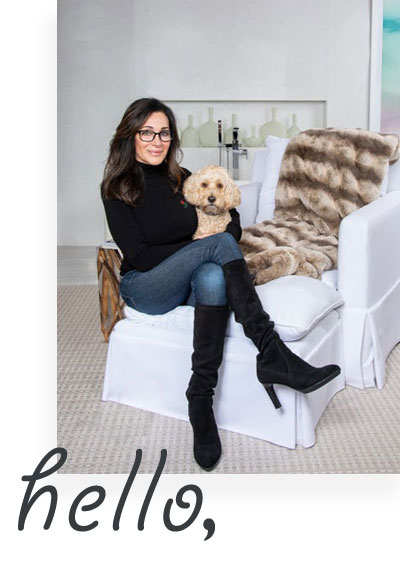
I’m Deborah! My mission is to show others by demonstration, that no living being, human & non, be sacrificed for beautiful, non toxic, healthy & durable furniture & decor. More about me.

